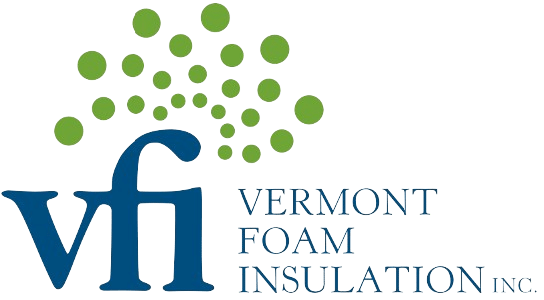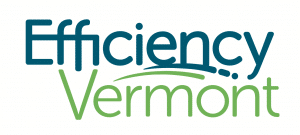If you are a homeowner savvy on the benefits of upgrading your insulation, you may be sizing up the wall insulation that already exists in your Vermont home. And who could blame you? Existing walls are visible (as opposed to other extremely important places for insulation, like the attic and crawl space), making insulation in existing walls more top of mind. But is it really worth it to install new insulation in existing walls?
At Vermont Foam Insulation, we work tirelessly to continue to educate ourselves and our customers in the best in building science and insulation installation techniques. While it’s certainly possible to install insulation in existing walls (and we certainly have), we find there are few scenarios where it provides a meaningful benefit compared to other home performance improvements.
The Most Important Places for Insulation
It may surprise you to hear, but walls are not the primary areas of your home that could benefit most from insulation—those would be your attic as well as your crawl space or basement.
A big reason why the top and bottom parts of your home are such good locations for upgraded insulation is because these areas are where most houses lose and gain the most energy. Much of this is due to a building science principle called the “stack effect,” which explains how heat and air move in a building. A house will act like a chimney, sucking in cold air at the bottom and losing expensive warm air at the top.
Additionally, proper attic insulation or upgrades to your crawl space or basement don’t require disturbing any drywall or drilling and patching holes. With walls, an insulation installer would need to drill small holes in each and every cavity between the studs (that’s a lot of holes!), and then blow or spray the insulation in somewhat blindly. And even then, there is no guarantee that all cavities will be uniformly insulated.
With upgraded insulation in these important areas, the benefits you will see and feel will include:
- Greater comfort
- More efficient heating & cooling
- Lower utility bills
- Eliminated ice dams
- And more!
Existing Walls Have Limited Capacity for Insulation
Another reason that wall insulation often does not provide the same level of benefit as insulating other areas is because unlike your attic or basement and crawl space, your wall cavities have a defined amount of space in which insulation can be installed. If the studs that your home was constructed with are only 5 ½” deep, then only 5 ½” (or less) of insulation can be blown into that existing wall cavity, meaning there is a limit to the R-value that can be reached. This limits how effective wall insulation projects can be.
With attic, basement, or crawl space insulation, there is more room for insulation to be installed to the exact recommended R-values for our service area.
All of that being said, there are occasional scenarios in which upgrading wall insulation can be helpful, so let’s get into the specifics of how Vermont Foam Insulation installs wall insulation in (some) existing walls.
There are Two Ways to Insulate Existing Walls (That Are Empty)
Under the right circumstances, certain types of insulation can be installed directly into a wall through small holes, including injection foam and blown-in cellulose. Our insulation team at Vermont Foam can drill holes that range in size from ½”-2” (depending on the type of insulation being installed) and install new insulation.
BUT, this really only makes sense with walls that are completely empty and uninsulated. Because there are many old Vermont farmhouses in our area, we do find homes from time-to-time where the walls were never insulated, but this is far from the norm. The vast majority of homes likely have some amount of insulation in their walls, making them poor candidates for wall insulation upgrades.
Injection Spray Foam
Injection spray foam insulation is applied as a liquid and very slowly expands in size. The slow rise of injection foam allows it to fill even the tiniest holes and cracks where energy could escape, however that does also mean it can leak out in unexpected areas. This is a double edged sword, but ultimately it means a very good air seal has been achieved.
Preparation is key to a successful injection spray foam insulation job. As many openings as possible must be closed off with tape or caulk towards the inside and outside of the house, and it does require drilling many holes less than 1” in diameter from either the inside or outside of the house. Injection foam, also known as Pour-in-Place (PIP), is available in both a closed cell and open cell form.
Cellulose
Cellulose insulation is made with recycled, post-consumer newsprint and comes in a loose-fill form that can be blown into empty existing walls until it is densely packed. We often use cellulose in retrofit work because it can be packed to provide excellent thermal resistance. Another benefit of cellulose is that it’s treated to resist fire, mold, and pests.
While an insulation contractor would need to create fewer holes in a wall to install blown in cellulose, the holes would need to be a bit larger, closer to 2” in diameter.
When Should You Upgrade Your Wall Insulation?
Installing insulation in existing walls is rarely a service we recommend, but that does not mean it is never worth it. There have been scenarios where Vermont Foam Insulation has driven our spray foam trucks to non-insulation related home renovation projects just to install 200 square feet of insulation in an area where the drywall has been removed in order to fix things like plumbing or electrical.
However, most of the time, we can address the problems local homeowners are experiencing in their homes in other ways, including attic insulation and basement and crawl space upgrades. These options create less damage to your home and have a much higher likelihood of resulting in energy savings and improved indoor comfort.
At Vermont Foam Insulation, we’ve been helping homeowners throughout Southern Vermont and Western New Hampshire since 2006 with our comprehensive insulation services. Our team is fully trained and certified to have the expertise needed to properly install new insulation in your existing walls? Have fiberglass insulation and want to make the switch to spray foam? No problem, we can do insulation removal too. We can even help you find and qualify for several rebates!








